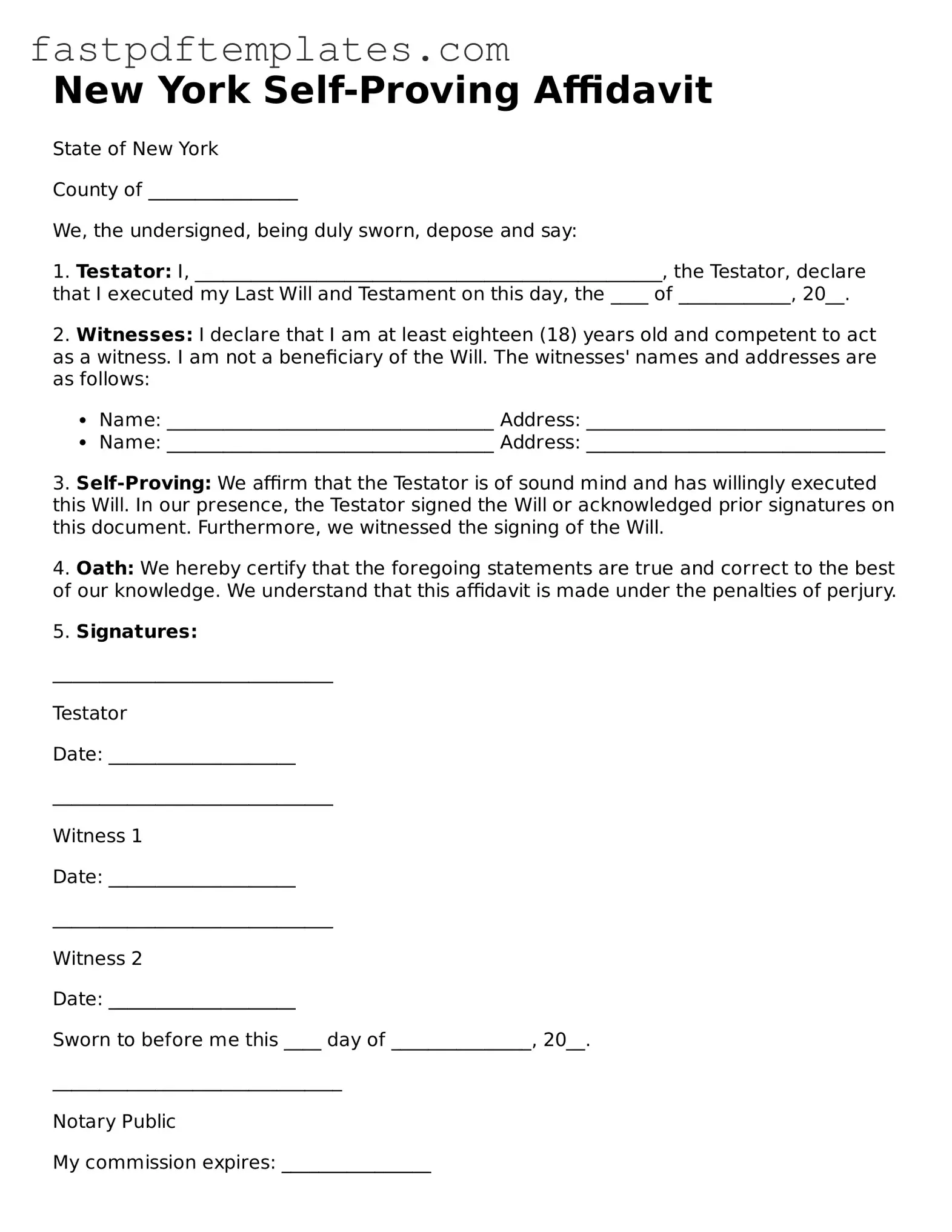New York Self-Proving Affidavit
State of New York
County of ________________
We, the undersigned, being duly sworn, depose and say:
1. Testator: I, __________________________________________________, the Testator, declare that I executed my Last Will and Testament on this day, the ____ of ____________, 20__.
2. Witnesses: I declare that I am at least eighteen (18) years old and competent to act as a witness. I am not a beneficiary of the Will. The witnesses' names and addresses are as follows:
- Name: ___________________________________ Address: ________________________________
- Name: ___________________________________ Address: ________________________________
3. Self-Proving: We affirm that the Testator is of sound mind and has willingly executed this Will. In our presence, the Testator signed the Will or acknowledged prior signatures on this document. Furthermore, we witnessed the signing of the Will.
4. Oath: We hereby certify that the foregoing statements are true and correct to the best of our knowledge. We understand that this affidavit is made under the penalties of perjury.
5. Signatures:
______________________________
Testator
Date: ____________________
______________________________
Witness 1
Date: ____________________
______________________________
Witness 2
Date: ____________________
Sworn to before me this ____ day of _______________, 20__.
_______________________________
Notary Public
My commission expires: ________________
